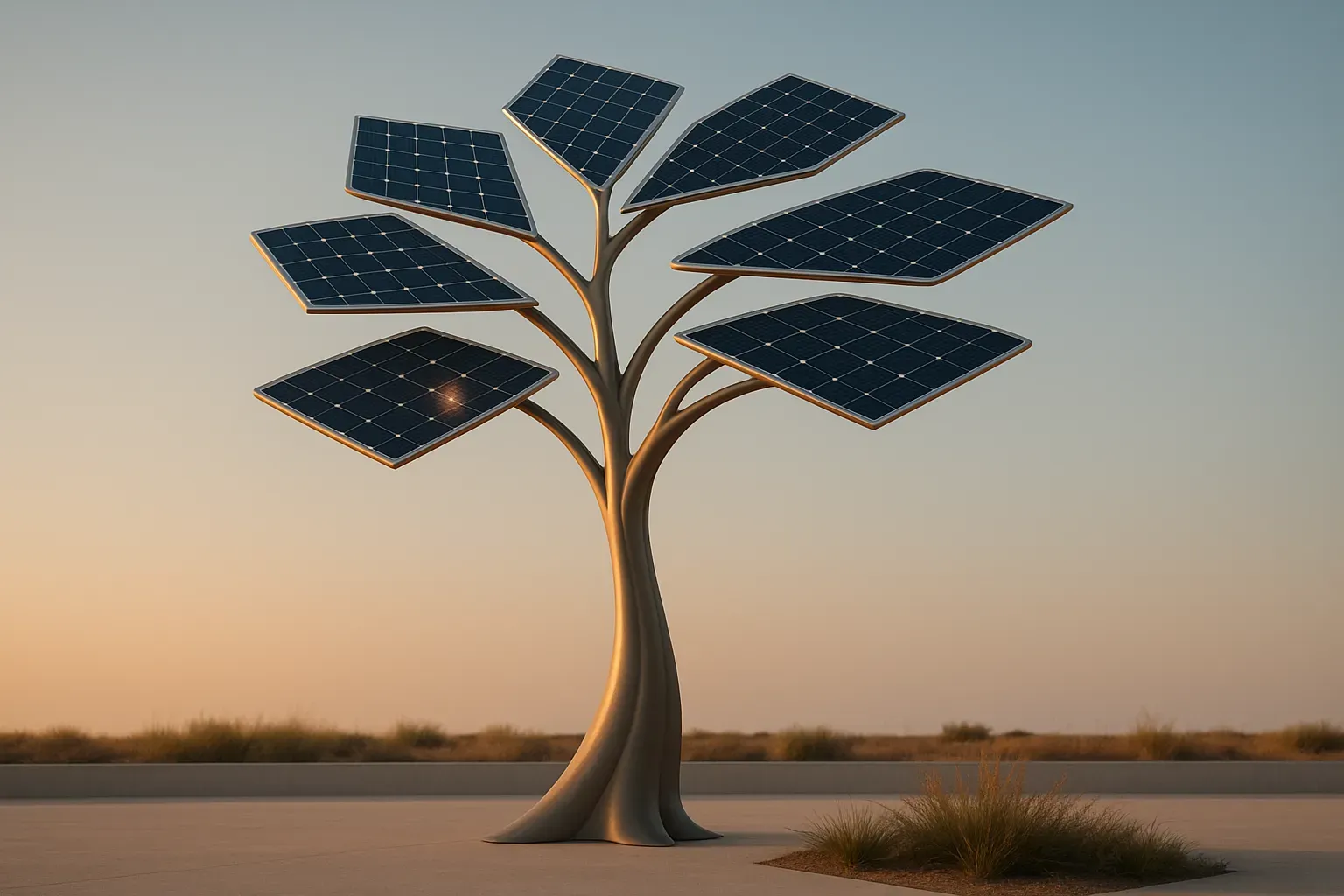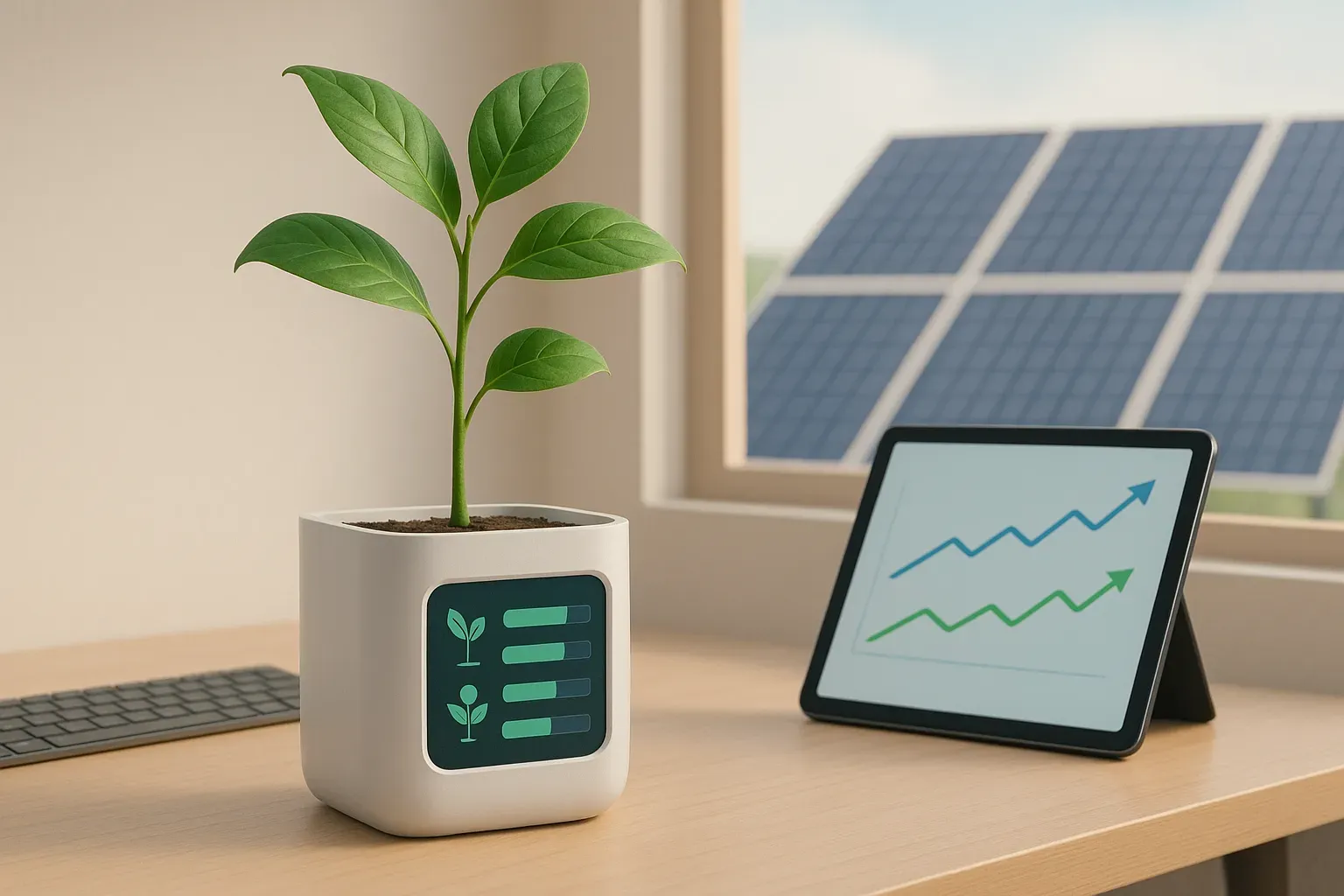Sustainable technology is reshaping industries and driving positive change across the globe. This article highlights innovative companies that are leading the charge in environmental responsibility and ethical business practices. Drawing on insights from industry experts, we explore how these forward-thinking organizations are creating a more sustainable future through groundbreaking initiatives and technologies.
- Fairphone: Pioneering Ethical Smartphone Design
- Microsoft Leads Carbon Negative Tech Revolution
- Samsung Reimagines Electronics Lifecycle for Sustainability
- Framework Proves Premium Laptops Can Be Repairable
- Microsoft’s Water-Positive Initiative Tackles Data Centers
- Tomorrow’s Air Removes Carbon for Sustainable Travel
- Neara Optimizes Existing Grids for Clean Energy
- Schneider Electric: Comprehensive Sustainability Leader
- Patagonia Blends Business with Environmental Activism
- Cambium Transforms Urban Wood into Valuable Products
- CarbonCure Injects CO2 into Stronger Concrete
- Siemens Reinvents Itself as Sustainability Pioneer
- Algbra Integrates Ethics into Fintech Products
- NVIDIA Designs Energy-Efficient AI Computing Architecture
- Too Good To Go App Reduces Food Waste
- AMP Robotics Revolutionizes Recycling with AI
Fairphone: Pioneering Ethical Smartphone Design
Fairphone is an outstanding example of a sustainable tech company committed to ethical sourcing and circular electronics. What sets Fairphone apart is its modular smartphone design, which allows users to quickly repair and upgrade their devices, significantly extending their lifespan and reducing e-waste.
Why Fairphone Stands Out:
1. Circular Economy Focus – Fairphone champions a sustainable electronics model, ensuring minimal waste and maximum resource efficiency.
2. Modular Design – Users can replace or upgrade individual phone components instead of discarding the entire device, enabling long-term usability.
3. Ethical Sourcing – Fairphone ensures its supply chain is free from conflict minerals and exploitative labor practices, setting a benchmark for responsible manufacturing.
4. Transparency – The company openly shares its supply chain practices, empowering consumers with ethical purchasing decisions.
5. Community-Driven Innovation – Fairphone actively incorporates user feedback, similar to how Amazon and Netflix refine their services based on customer insights.
As sustainable tech gains momentum, companies like Fairphone prove that ethical innovation is not only possible but also scalable. Their dedication to a decarbonized economy aligns with the global push for sustainability, making them a prime example of tech-driven environmental responsibility.
 Sourabh Kapoor
Sourabh Kapoor
Technopreneur/CTO, BOTSHOT
Microsoft Leads Carbon Negative Tech Revolution
Microsoft stands out for its commitment to sustainability. By 2030, it aims to be carbon negative, removing more emissions than it emits. The company plans to eliminate all emissions since its founding by 2050. This comprehensive strategy includes water replenishment and zero waste goals, alongside tools like Microsoft Cloud for Sustainability to help other businesses track and reduce their environmental impact.
Another aspect that makes the company stand out is its curative interventions, such as Microsoft’s investment in global sustainability initiatives like its Climate Innovation Fund, which supports emerging climate technologies. It’s about leading by example, that is, matching its visionary goals with a commitment to fostering a greener future while enabling others to do the same.
 Dhari Alabdulhadi
Dhari Alabdulhadi
CTO and Founder, Ubuy Netherlands
Samsung Reimagines Electronics Lifecycle for Sustainability
I’ve become fascinated with Samsung’s circular economy initiatives—they’re implementing possibly the most practical sustainability approach in consumer electronics.
While most companies talk about recycling in general terms, Samsung created concrete programs like Galaxy Upcycling, which transforms old phones into IoT devices instead of e-waste.
A remarkable shift occurred when they expanded their thinking beyond manufacturing. Samsung now incorporates sustainability across the entire product lifecycle, from sourcing recycled materials to extending device lifespans through software updates to comprehensive take-back programs.
These aren’t token efforts—they represent a fundamental rethinking of consumer electronics.
Many tech giants make the shortsighted mistake of focusing solely on operational emissions. Samsung completely reimagined their approach by addressing the massive environmental impact of electronic waste.
Their commitment to recovering 7.5 million tons of e-waste and extending flagship device support to seven years significantly reduces the hidden environmental costs of constant upgrades.
The sustainability principle worth adopting: Lifecycle thinking beats narrow carbon focus. Understanding your product’s complete environmental journey matters more than just clean manufacturing.
When companies design both products and business models to extend useful life and recapture materials, they create sustainability improvements that traditional environmental metrics often miss.
 Tristan Harris
Tristan Harris
Sr. VP of Marketing, Next Net Media
Framework Proves Premium Laptops Can Be Repairable
Framework stands out as a sustainable tech company I deeply admire for their repairable, modular laptop design. A tech director I collaborate with for UN events switched their team to Framework laptops and reported a significant reduction in electronic waste while maintaining professional-grade performance.
What impresses me most is how Framework proves premium design and repairability can coexist—something many tech giants claim is impossible. Their expansion card system allows users to customize ports as needed, perfect for adapting to different event venues with varying tech setups.
For business leaders considering sustainability initiatives, starting with your everyday tools creates tangible impact. Framework shows us that demanding better from tech companies shifts the industry toward more responsible practices.
 Michelle Garrison
Michelle Garrison
Event Tech and AI Strategist, We & Goliath
Microsoft’s Water-Positive Initiative Tackles Data Centers
Microsoft’s WATER-POSITIVE initiative represents one of the most forward-thinking sustainability approaches I’ve seen in big tech. Most companies focus exclusively on carbon emissions, but Microsoft recognized that data centers’ massive water consumption creates another significant environmental challenge that deserves attention.
Their commitment to becoming water-positive by replenishing more water than they consume addresses a critical but often overlooked aspect of technology’s environmental impact.
Through investing in water conservation projects in water-stressed regions where they operate, they’re taking responsibility for their full environmental footprint.
This comprehensive approach to sustainability—addressing carbon, water, and waste simultaneously—provides a model for how tech companies should be thinking beyond just carbon neutrality to true environmental stewardship.
 Marc Hardgrove
Marc Hardgrove
CEO, The Hoth
Tomorrow’s Air Removes Carbon for Sustainable Travel
The organization I’d like to highlight is called Tomorrow’s Air. They are building a portfolio of cutting-edge technology companies that are taking carbon out of the atmosphere as it exists today and permanently storing it underground. It’s helping tackle the climate problem in a real way, and their carbon removals are much more effective than carbon offsets, which are more targeted to reducing or avoiding emissions that will occur in the future.
We automatically include carbon removals through Tomorrow’s Air for each of our travelers, and this is a sustainable initiative we are incredibly proud of! We want to reduce the decision-making work for our travelers and help them travel more responsibly simply by booking their package trip through us.
 Hilary Matson
Hilary Matson
Founder & CEO, Yugen Earthside
Neara Optimizes Existing Grids for Clean Energy
My favorite sustainable tech company is Neara. Growing up in Texas, I witnessed firsthand the difficulty of balancing the state’s rising demand for energy with the need to find cleaner, more efficient sources of power. What I love most about Neara is how they are tackling this challenge without the billions of dollars and years of construction that building entirely new grid infrastructure entails.
Instead, they employ complex modeling software and artificial intelligence to help utilities extract the most from existing power lines. For example, their platform knows how much more clean energy—wind, say, or solar—can be safely pushed through the grid, based on things like weather patterns and terrain in the real world. Such innovation makes integrating clean energy faster, smarter, and much cheaper.
Neara differentiates itself with the pragmatic nature of its approach. Utilities routinely encounter roadblocks such as permitting delays and land acquisition issues when trying to expand infrastructure. Neara avoids that by leveraging what’s already present. This, in turn, reduces carbon emissions and saves taxpayers money.
 Aaron Whittaker
Aaron Whittaker
VP of Demand Generation & Marketing, Thrive Digital Marketing Agency
Schneider Electric: Comprehensive Sustainability Leader
Schneider Electric stands out as an admirable leader in sustainable technology. Ranked as the “#1 Most Sustainable Corporation” in the Corporate Knights Global 100 Index for 2021, Schneider has established an impressive sustainability strategy built around six key commitments: acting for a climate-positive world, being efficient with resources, living up to principles of trust, creating equal opportunities, harnessing generational power, and empowering local communities. Their concrete approach includes measurable targets for 2025, such as helping customers save 800 million tonnes of CO2 emissions and reducing carbon emissions from their top 1,000 suppliers by 50%.
What truly impresses me about Schneider Electric is their comprehensive approach to sustainability that extends beyond their own operations. Their commitment to providing access to clean electricity to 50 million people demonstrates their dedication to addressing energy poverty while advancing environmental goals. Additionally, their Zero Carbon Project supports suppliers in halving their carbon emissions through specialized training and tools. Schneider Electric combines technical innovation with social responsibility, proving that corporate sustainability can drive positive global impact across multiple dimensions.
 Thulazshini Tamilchelvan
Thulazshini Tamilchelvan
Content Workflow Coordinator, Team Lead, Ampifire
Patagonia Blends Business with Environmental Activism
The company that stands out to me in the realm of sustainable technology is Patagonia. They have consistently impressed me with their commitment to environmental responsibility and innovative approach to sustainability. From their use of recycled materials in clothing production to their dedication to reducing their carbon footprint, Patagonia has become a benchmark for companies striving to create both high-performance products and a positive impact on the planet.
Their dedication goes beyond just producing eco-friendly products; they actively work to protect the environment through initiatives such as the 1% for the Planet campaign, which contributes a portion of profits to environmental causes. What I truly admire about Patagonia’s work is how they’ve managed to seamlessly blend business with activism. They’ve proven that a company can not only succeed financially but also be a powerful agent of change.
I remember reading a story about how they used their platform to advocate for public lands protection and climate change legislation. This is just one example of how they actively use their voice to promote important issues, inspiring others to take action.
The culture of transparency that Patagonia promotes also strikes a chord with me. They don’t just claim to be sustainable; they provide tangible, verifiable proof of their efforts. For instance, their transparency in supply chain practices allows customers to see exactly how and where their products are made, which builds trust and empowers consumers to make more informed choices.
This level of openness about their business practices sets a powerful example for others in the tech and fashion industries alike, showcasing that sustainability and business success can go hand in hand. Their model is truly revolutionary, showing that companies can be both profitable and environmentally responsible. They continue to lead the charge in sustainable innovation, and I believe their commitment to ethical business practices will serve as a model for the future of both the tech and fashion industries.
 Danielle Beattie
Danielle Beattie
Director of National Marketing, Studio Three
Cambium Transforms Urban Wood into Valuable Products
My favorite sustainable tech company is Cambium, which repurposes fallen city trees into beautiful, durable products instead of allowing them to go to waste. Cambium is starting this circular economy around urban wood, which is often overlooked in most cities, and I had the chance to attend a conference they gave and learn more about it.
Year after year, cities across the U.S. cut down millions of trees that have become old, diseased, or storm-damaged, with most of that wood being chipped or dumped. Cambium’s partners still have that wood on their hands, and instead of letting it become a missed opportunity, it works with local sawmills, designers, and builders to rework that material into everything from custom furniture to architectural woodwork.
What I found remarkable was how down-to-earth and scalable their solution is. For example, they estimate that more than 100,000 urban trees are removed every year in Washington D.C. alone—enough wood to construct over 1,000 houses. Cambium not only helps alleviate waste but also reinvests in the local economy through the jobs it creates in milling and carpentry. Their model demonstrates that sustainability doesn’t have to be complex or involve high-tech solutions; it can begin with simply changing the way we define the value of natural resources.
 Matt Bowman
Matt Bowman
Founder, Thrive Local
CarbonCure Injects CO2 into Stronger Concrete
The company I admire in the sustainable tech space is CarbonCure Technologies. They’ve developed a process that captures CO2 and injects it into concrete, making it stronger and reducing emissions. This innovation is inspiring because, like in landscaping, it shows how we can create better outcomes for both the environment and the product itself. Their approach proves that sustainability can be built into industries in practical ways, something I strive for. Just as they’re transforming concrete, we’re helping homeowners transform their lawns with eco-friendly fertilization and mowing. CarbonCure’s work is a perfect example of how smart technology can drive real environmental change, and it motivates me to keep pushing for a greener, more sustainable future in landscaping.
 Francis Daniels
Francis Daniels
Founder & CEO | Turfpro, Turf Pro
Siemens Reinvents Itself as Sustainability Pioneer
I am truly impressed by how Siemens is transitioning far beyond its 177-year manufacturing roots into a sustainability pioneer.
It’s a practical approach to creating Siemensstadt Square—using its own digital twin technology to design sustainable urban environments rather than just making environmental pledges.
Their commitment to cut physical CO2 emissions by 55% by 2025 shows real accountability, moving beyond vague carbon offset promises.
I particularly respect how they’re applying their core technology expertise to solve sustainability challenges through their Xcelerator platform. The Berlin sustainable city project demonstrates how established companies can reinvent themselves as sustainability leaders.
This blend of historic industrial knowledge with forward-thinking technology applications creates a compelling blueprint for other companies.
Their approach aligns with what we’ve found works for our clients—measurable goals paired with practical applications of existing technological strengths.
 Bryan Vasquez
Bryan Vasquez
Head of Sales, LinkBuilder(dot)io
Algbra Integrates Ethics into Fintech Products
One company I admire is Algbra. They’re not just integrating sustainability into their operations—they’ve built an ethical framework into their product offering, ensuring user funds avoid harmful industries. It’s rare to see this level of alignment between values and technological implementation. Their approach to carbon offsetting, charitable donations, and transparent governance sets a bar for fintechs who want to lead with purpose, not just profit.
 Sergiy Fitsak
Sergiy Fitsak
Managing Director, Fintech Expert, Softjourn
NVIDIA Designs Energy-Efficient AI Computing Architecture
I’ve been following NVIDIA’s sustainability journey closely, and their approach to energy efficiency in AI technology stands out in the industry.
I found that while AI has dramatically increased energy consumption across the tech sector, NVIDIA has managed to design their Blackwell GPUs to be 20 times more energy efficient than traditional CPUs for AI workloads.
This focus on efficiency rather than just offsetting emissions shows a deeper commitment to addressing the root causes of tech’s environmental impact.
What impresses me most is how they’ve integrated sustainability into their core product development rather than treating it as a separate initiative.
As AI continues transforming industries, this emphasis on energy-efficient computing architecture will be crucial for managing the technology’s environmental footprint.
Their commitment to achieving 100% renewable electricity for their offices and data centers by 2025 further demonstrates their comprehensive approach to sustainability.
For companies looking to improve their own sustainability initiatives, focusing on core product efficiency rather than just offsets creates more meaningful environmental impact.
Examining how your primary offerings can be redesigned for lower resource consumption often yields better results than separate sustainability programs that don’t address fundamental business operations.
 Matt Harrison
Matt Harrison
Svp of Product and Client Experience, Authority Builders
Too Good To Go App Reduces Food Waste
Another standout is Too Good To Go. They’ve built a simple yet brilliant app that connects users with restaurants and grocery stores offering surplus food at a discount—reducing food waste while saving people money. What I admire is how elegantly they’ve solved a massive environmental issue through everyday behavior. It’s not flashy AI or futuristic hardware—it’s smart tech with a human, immediate impact. Sustainability doesn’t have to be complicated to be powerful.
 Justin Belmont
Justin Belmont
Founder & CEO, Prose
AMP Robotics Revolutionizes Recycling with AI
One sustainable tech company I genuinely admire is AMP Robotics. They’re doing something that sounds almost too sci-fi to be real—but it’s already transforming one of the messiest, most overlooked problems out there: recycling.
What’s wild about AMP is how they use AI-powered robots to sort waste with freakish precision. Picture this: instead of human workers sorting through piles of garbage by hand (often in dangerous, unsanitary conditions), their robotic systems can identify and pick out materials like different types of plastic, paper, and metals—at a speed of 80 items per minute, with accuracy that beats the human eye.
But here’s the real kicker: it’s not just about efficiency. It’s about rescuing recycling itself from collapse. Most people don’t realize that a lot of what we throw into the blue bin never gets recycled—not because it can’t be, but because it’s too contaminated or too expensive to sort. AMP’s tech makes it profitable to recover materials that used to get sent straight to landfills. They’re closing that loop that so many “sustainable” companies ignore.
What impresses me most, though, isn’t just the tech—it’s the philosophical shift. Recycling has always been treated like the end of a product’s life cycle. AMP flips that mindset. They treat waste like data–something to be decoded, understood, and put back to work. In a world drowning in garbage, that’s not just smart—it’s absolutely necessary.
 Derek Pankaew
Derek Pankaew
CEO & Founder, Listening(dot)com













